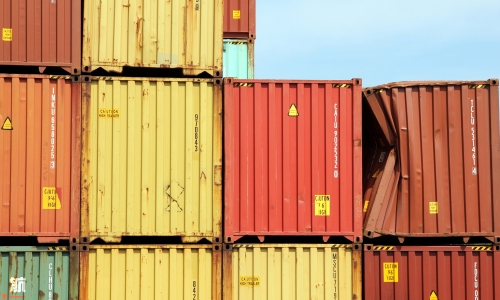5 Common International Shipping Mistakes SMEs Should Beware Of

With the new-found ease that SMEs are experiencing in the business of international supply and sales, it's hardly surprising that many choose to expand their markets outside of their home countries and tap into the global economy. However, when you rush into something fuelled with enthusiasm and aided by technology, there is always the risk of making mistakes.
It doesn’t have to be that way though, because forewarned, as they say, is forearmed, and with a little knowledge of the most common international shipping mistakes, you can avoid them as you expand your small to medium-sized enterprise and reach into new regional markets.

You will find five of those mistakes detailed briefly in this article, aimed to raise your awareness and help you learn from the errors that others have made, rather than making them yourself and experiencing their sometimes costly impacts.
Put These International Shipping Mistakes on Your To-Avoid List
Mistake #1: Failing to Research Customs Regulations
Customs rules and regulations differ from country to country, so while you might be able to ship your products freely say, to Japan, the same items might require an import license or some form of certification in the United Kingdom.
If you don’t research the regulations for the intended destination of your goods, you might find your first international freight shipment never gets past the import customs clearance procedure.
Of course, you will know what’s necessary by the time you ship a second consignment, but by then, you may have spent significant sums of money correcting your initial error, and might even have lost an entire shipment following its confiscation by customs authorities.
Before you begin shipping your products internationally, do your homework to understand the customs rules and regulations, engage a trade consultant to guide you, or let a competent freight forwarder, with expertise in shipping to your target country, take charge of your shipments for you.
Mistake #2: Miscalculating the Timing
Whether you are importing materials or goods from a foreign supplier, or sending your products to overseas customers or distribution facilities, timing is everything. If you don’t calculate shipping durations and cutoff times correctly when planning inbound shipments or promising delivery to customers, your international supply chain might fall over.
Know your transit times
Be sure to understand the maximum time your shipment is likely to spend in transit before making any plans or promises that depend on its arrival. While it doesn’t make sense to factor in the possibility of delays in import or export customs clearance, you should at least be familiar with the time needed for transit under normal circumstances.
Remember that even if you use air freight rather than ocean freight for your shipment, total transit time will be considerably longer than the duration of the flight from the airport of loading to the airport of discharge.
Be Aware of Validity Periods for Freight Quotes
Another timing issue that often trips new international shippers up is the time elapsed between receiving a quote from a traditional or online freight forwarder, and the expiry of that quote. If you don’t act while the quote is valid, you will find yourself unable to book your shipment, and might suffer a delay in obtaining a new quote.
The problem is less likely to occur with an online forwarder, as you will probably receive a new quote within moments of requesting it, but if you work with a traditional forwarder, several days may elapse before you receive a new freight quotation.
Mistake #3: Underestimating Packaging Needs
Packaging requirements and best practices will naturally depend upon the nature of the goods you are shipping, but businesses commonly make the mistake of underestimating the degree to which freight is vulnerable to handling mishaps. In ocean shipping, for instance, containers can shift on the deck of a vessel or even be dropped accidentally at a port.
Diligence over packaging should begin even before you start physically preparing freight for shipping. Try to determine how many times your goods will be handled, including the handling of their shipping container, between the points of origin and destination. The more handling they will undergo, the more robustly you should pack them.
3 Quick Packaging Tips
The practical aspect of packaging deserves an article all to itself—or even several articles—and we will cover the topic in depth in future posts here on the Shipa Freight Knowledge Series, In the meantime, here are three tips that will help you protect your goods from the rigors of international air and ocean freight shipping.
-
Avoid reusing boxes, as they lose a considerable amount of structural integrity with each use.
-
Seal all the seams of your cartons: not just the top and bottom seams. Your goods may be exposed to wet conditions at some point in the shipping process, and unsealed seams will weaken your cartons, increasing the risk of damage to the contents.
-
Always pack a label inside each box, with the receiver’s address printed on it. That will help to ensure that even if a box is broken or accidentally opened during shipment, its handlers will know where the contents should be sent.
Mistake #4: Overlooking Cargo Insurance Details
You probably know that you need insurance against loss or damage to your freight during shipping, but the fine print of insurance policies and schedules seldom makes for engaging reading. However, overlooking insurance details can be a costly mistake. As monotonous as that small print may be, you owe it to your business to read and understand it, or have your insurer or freight forwarder explain the details of an insurance product before you commit to purchasing it.
As an example, insurers may specify that their cover depends on how certain types of goods are packaged. If your freight falls into such a category, and you’re not aware of the requirements, you might find out too late (after something has happened to your shipment) that the expensive cover you purchased is worthless and that you’ve no way to recoup the cost of losses or damages to your freight.
Mistake #5: Over-Reliance on Service Providers’ Knowledge
At Shipa Freight, we go out of our way to be the only source of international shipping knowledge our customers need, as do many freight forwarders. However, it will be much easier for your business to discuss needs with your shipping partners if you develop some internal knowledge of the industry and its interrelationships with your enterprise as a whole.
Freight rates, international trade lanes, insurance policies, and shipping regulations change frequently, so maximizing the value received from forwarders and carriers is possible only if somebody in your business is accountable for staying up to date with developments.
Expertise is not essential, but a little internal awareness can make a big difference to the cost of international shipping and ultimately, to your profitability.
Don’t Pay the Price of Freight Shipping Mistakes
Now you have the lowdown on five common freight mistakes made by SMEs when entering the world of global trade, so you should have no trouble steering clear of them and as a result, enjoying more efficient and cost-effective shipping.

At Shipa Freight, we understand the challenges that SMEs face when managing international freight, and we’re committed to simplifying the environment and making it more accessible for smaller businesses. That’s why we’re continuously adding to our Knowledge Series, and why you could do a lot worse than check back regularly for new insights.
Better still, why not sign up on the Shipa Freight platform and access the full benefit of online freight forwarding powered by Agility, a formidable force in global logistics, now bringing big-business shipping capabilities to SMEs around the world.


